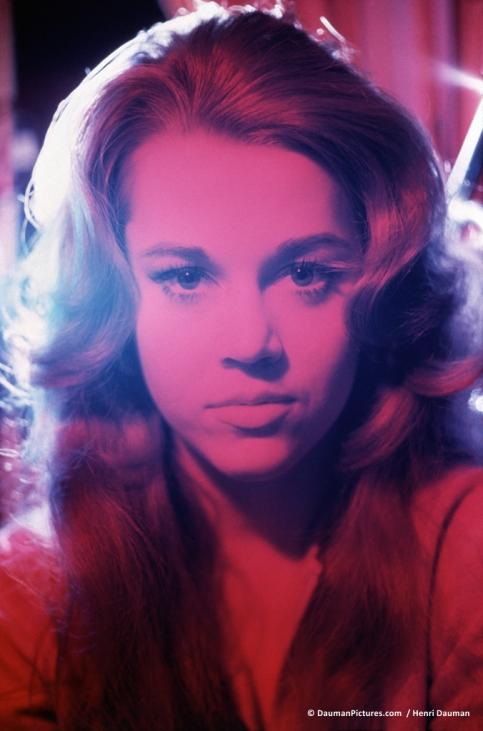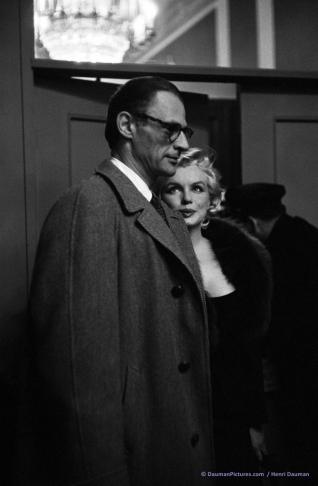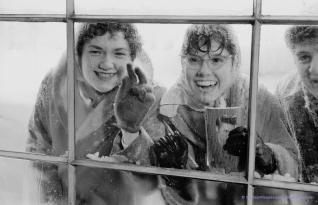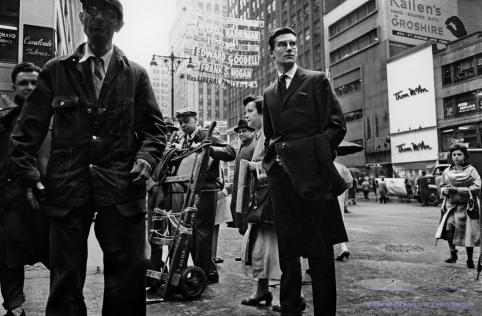Henri Dauman, a French photographer, born in Paris in 1933, emigrated from France to America in 1950. He found the elegance of Manhattan fascinating from day one and developed a series of architectural photographs of New-York. He never stopped photographing the city.
From encounters to commissions, his choice subjects included Marilyn Monroe, Jacqueline Kennedy, Andy Warhol and Elvis Presley. He became a well-known photo-journalist and worked with all of the big name American and French publications: Life, the New York Times, Paris Match… Dauman bore witness to huge advances in American society with his work on the civil rights movement in particular. He considered the freedom of the photographer to be a moral act and a struggle.
Exhibition co-produced with Muse Association.
with the support of CANSON, the Ministry of culture – DRAC Bourgogne Franche-Comté and the Friends of the Nicéphore Niépce museum
Original idea by Vincent Montana
Curated by François Cheval, Audrey Hoareau, Emmanuelle Vieillard
www.manhattan-darkroom.com
The Manhattan Darkroom, a retrospective of the work of French photographer Henri Dauman takes the public on a journey through the recent history of the United States.
From Andy Warhol’s first exhibitions to the beginnings of Minimal Art, the exhibition illustrates the advent of a dynamic and thriving artistic scene. New York is a crucible for these transformations, with its flourishing avant-garde embodied by Merce Cunningham, Philip Glass or Walter Carlos. John V. Lindsay and John Fitzgerald Kennedy experiment with new forms of political marketing; communication changes and Henri Dauman’s work echoes these changes. In the increasingly fast-paced 1960s, women, African-Americans and other minorities take to the street to claim their rights. In Life
or the New York Times
, Henri Dauman’s photographs document these evolutions, with his faithful and original style. More than a photography exhibition, The Manhattan Darkroom
is a testimony to modern America.
Henri Dauman was born in 1933 in Paris. After losing both his parents in the Second World War, he emigrated to the United States in 1950. Joining his uncle in New York, he settled there with his camera to start his career as a photographer. Beginning as a correspondent for French and international media, he joined a flourishing roster of American news magazines, keeping a freelance status which also allowed him to work for the New York Times’s culture supplement. Henri Dauman’s qualities - bilingual, enthusiastic, and with a personal style - were widely appreciated. Magazine editors who praised his subtle and efficient sense of composition, his close relationships with his subjects and his sense of narration entrusted him with many covers and colour series.
Dauman was fascinated by America - astonished, even. The first photos betray the young man’s amazement at the city’s power and architectural elegance. Later on, with « Looking up » (1960) and « Roof top living in New York » (1963), Henri Dauman never ceased to picture the only city that mattered to him : New York. Settling in the Upper West Side, he captured the neighbourhood’s casual and uninhibited spirit in his photographs. In the Bronx, he depicted a completely different world, with « The Savage Nomads Gang » (1977), picturing rebellious youth inventing their own codes.
Dauman’s portraits were particularly appreciated by the media. He used both colour and black and white cameras to evoke his subject’s true nature, getting as close as he could to people’s identities and creating biographic portraits. He constantly strove for images that were more than mere illustrations. His portraits of women (Jane Fonda, Jean Seberg, Marylin Monroe) are filled with a particular tenderness: the viewer is alone with them. This feeling of closeness also transpires, rather unexpectedly, from his photos of male figures such as Jean-Luc Godard, Eugene Ionesco or Elvis Presley. Henri Dauman’s priority was to tell stories. He often resorted to cinematic techniques - sequences, short cuts, close-ups, fade to black, play with light - so that the image, the caption and the text all became one. The layout of the magazines often echoed the efficiency of American films. This particular style is more than a homage : it is a response to the growing competition of emerging media. Ironically, Dauman’s work reached its acme (JFK’s funeral in 1963) precisely when television became allencompassing, bringing the golden age of magazines to its end. This crucial moment in the history of communication is foretold in Dauman’s premonitory portrait of Marshall Mac Luhan (1974).
Henri Dauman’s photographic work sheds a new light on America. Shot at a key moment of transition between generations, as the United Stated were renewing their ideas, their form and their models, Dauman’s work offers contrasted representations of doubt, empowerment and hope. This is the vision of a man whose original path and true eye put him in a privileged position to tell the story of modern America.
Guided tour:
with Henri Dauman
Saturday February 11th
/ 3.30 pm
followed by a book signing
Publications:
Henri Dauman / The Manhattan Darkroom
Photographs : Herni Dauman
Texts :François Cheval and Audrey Hoareau
collector édition
Palais d’Iéna / Paris, 2014
128 pages










